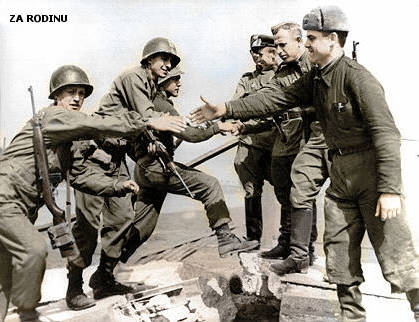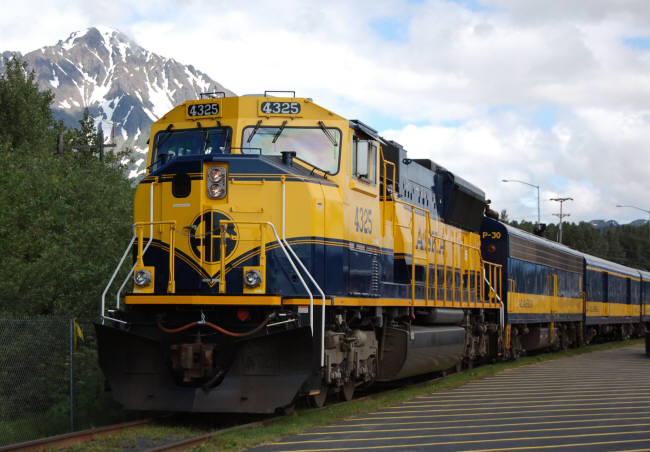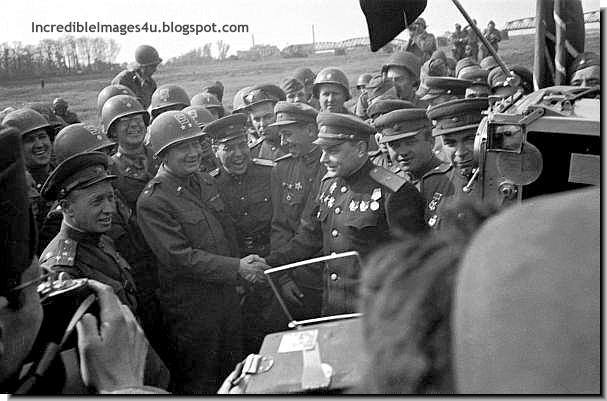"BIG TICKET". Is Alberta to Alaska Railway Port Mac's Sugar Savior? The railway may become a reality in 2022 if Sean McCoshen of A2A Railway has his way. By Dennis Anderson, AP, Jan. 3, 2019.

INTER. Sept. 23, 2012
RiaNovosti, May 13, 2014
InterBering, LLC
BERING STRAIT TUNNEL & RAILROAD
CONSTRUCTION INVESTMENT CORPORATION
English
Connecting people and continents.
April 28, 2012
--------------------------------------
--------------------------------------
--------------------------------------
America - Asia - Europe
International Railroad
--------------------------------------
--------------------------------------
--------------------------------------
--------------------------------------
--------------------------------------
--------------------------------------
By Ed Peters, South China Morning Post, Oct. 4, 2020.

ASPECTS OF RAILROAD TECHNOLOGY
AS RELATED TO A RAILROAD
FROM ASIA TO NORTH AMERICA
VIA A TUNNEL UNDER THE BERING STRAIT
Speech by Louis T. Cerny, International Railroad Consultant
and former Executive Director
of the American Railway Engineering Association
(
BIO
)
.
As delivered at the August 17-19, 2011 conference on
"North-East Russia Infrastructure Integrated Development" in Yakutsk, Russia.
First of all, let me thank the conference organizers for the opportunity to speak to you today about a project that could mark the most significant joining of Russian and American forces since Russian and American armies joined at the Elbe River in Germany on April 26, 1945. But in this case we can envision Russian and American tunnel workers meeting at a point under the Bering Strait as they complete a railroad tunnel that will join by land transportation the world's five largest continents, all except Australia and Antarctica.
This railroad connecting the continents of North American and Asia will be of great benefit to North-East Russia, as the region will be on an all-weather main artery of international commerce (possibly the equivalent of the Suez or Panama Canal) which will allow the development of the area's resources, as well as providing excellent jobs itself.
Before I go further, I want to bring greetings to you from the railroaders of North America, those employees of the continuous network that covers Canada, Mexico, and the United States. I would also like to read a short letter to all of you that are attending the conference from Bob VanderClute, Senior Vice President of the Association of American Railroads in Washington.
"To participants in the North-East Russia Infrastructure Conference: Please accept my best wishes for a successful conference August 17-19, 2011 in Yakutsk, Sakha Republic (Yakutia), Russia regarding the construction of new railroad lines in North-East Russia, including the role of such new infrastructure in the proposed project of a railroad connecting the Asian and North American railway networks via a tunnel under the Bering Strait."
Now I have a confession to make.
When I first heard about Bering Strait tunnel and railroad project, I was extremely skeptical and thought that this was a crazy idea. Why go all the way north to the Bering Strait and then come back south when we already have good shipping routes across the Pacific Ocean. If someone would have asked me whether the distance from Acapulco, Mexico to Bombay, India was shorter via an all-water route or via a land route using a Bering Strait tunnel, it would seem obvious that the shortest distance between these two tropical locations would be by water. But in fact the land route is shorter. The usual 2 maps of the world are based on being correct near the equator, but I found they greatly exaggerate the distances in the far north.
When a polar map or world globe is used, the value of a land transportation route via the Bering Strait is obvious.
A railroad via a Bering Strait tunnel has several advantages over ocean shipping. Let's take an example of shipping a container from an inland city in eastern Russia to Chicago in the United States.
The first advantage is that the train would save two land-to-water transfers. The container would move from the city of origin to Vladivostok by rail, then Vladivostok to Los Angeles (or other Pacific port) by ship and then by rail to Chicago. These land-water transfers can be expensive and especially time consuming when the loading and unloading of large container ships are considered. The train can make one continuous trip, and the difference in track gauge (distance between the two rails of one track) between Russia and North American can be taken care of by various designs of variable gauge bogies (trucks) or dual gauge track. In 2007 I discussed three possible concepts in dual gauge track to handle this matter.
The second advantage is that the all-rail route will be considerably shorter than the rail-water-rail route. Because of the great circle route used by the railroad, the container would have less distance to travel.
The third advantage of the all-rail route is speed. A three-day schedule from North-East Russia to Edmonton, Alberta, Canada is possible using average speeds of 90-95 kph
(kilometer per hour, or 56-59 miles per hour -
InterBering
)
. Edmonton has high capacity rail connections to the rest of North America. The line could provide four day service from Edmonton even to Harbin, China, where high capacity lines exist to the rest of China. These times are much shorter than those achieved by the fastest ocean container ships. If it is desired to have passenger trains for regional or tourist purposes, they can run at the same speed as the freights.
So all this sounds great, but can the tunnel and railroad actually be built?
When we compare this project to the rail tunnel under the English Channel from France to England, we find that the Bering Strait is no deeper than the English Channel, and, because of two islands in the Bering Strait, the longest continuous underwater distance is no longer than the English Channel tunnel. The Bering Strait is not a highly seismic zone, and the rock does not appear to present any special problems.
But what about permafrost? Permafrost is an issue which has many proven engineering solutions, as shown by the successful construction and operation of the railroad to Tibet in China, which was built under more difficult borderline permafrost conditions. The many railroads in Russia built on permafrost also show that permafrost has many solutions. It should also be mentioned that the proposed alignment of the railroad can always stay south of the Arctic Circle.
So there is no reason this railroad cannot be built. It is not a manned mission to Mars, with many unknowns. It is a very large project, but one which we can confidently engineer.
When we look at the current situation on the North American side, all-weather paved roads connecting with the rest of North America and also the Alaska Railroad both exist within less than 1000 kilometers of the Bering Strait, and long-existing plans are ready when a direct rail connection from Canada to Alaska is wanted. In fact, work is in progress as we speak to extend the railroad from Fairbanks, Alaska further east toward Canada. Work is about to start on a kilometer-long bridge over the Tanana River. The 1000 kilometer
(621 miles)
distance from existing modern transportation infrastructure to the Bering Strait in Alaska compares with the straight-line distance from Yakutsk to the Bering Strait which is about 2600 kilometers
(1,616 miles)
but about 3100 kilometers
(1,926 miles)
via Magadan. All these distances are approximate straight line measurements, and would be somewhat greater for a constructed railroad.
This difference in distance is why the work you are undertaking to build a railroad to the tip of North-east Russia near Uelen is so important. The political leaders and investors who will make decisions on building a tunnel under the Bering Strait can be discouraged by the long gaps in land infrastructure. A railroad to Uelen will show, in a way understandable by a non-technical person, what engineers already know, that such construction is feasible. The existence of the railroad will make the need for the tunnel more obvious. Once construction of the railroad in North-East Russia advances to within the same distance of the Bering Strait as where railroads and paved highways exist in Alaska, then interest in building the tunnel will increase, along with the Alaska - Canada rail connection. This point at which this will be achieved is about half way from the area north of Magadan to Uelen.
Once the need for the tunnel to close the land transportation gap is obvious, work can begin for the great international avenue of commerce that a double-track railroad via the Bering Strait would create.
How much can a modern double-track freight railroad carry? Capacity in international cargo is usually measured in TEUs (Twenty-foot Equivalent Units) which means the equivalent of a twenty foot (6.6 meter) container. One double-stack railroad platform can carry 4 TEUs, which is equal to two 40-foot (13.1 meter) containers. A typical situation in North America today is a train with 125 platforms carrying 500 TEUs. Using a casual operation, such a train every 25 minutes in each direction is easily achievable. With 20 hours of track time available for running trains each day, this gives 24,000 TEUs in each direction each day. This is the equivalent of several container ships of very large capacity. Best presently-utilized technology would allow trains of 150 double stack platforms (600 TEUs) every 15 minutes in each direction with 20 hours of track time per day, which gives 48,000 TEUs in each direction each day.
In terms of future possibilities, the use of so-called "distributed power," where locomotives are spaced throughout the train but controlled from the front locomotive, allows much longer trains without increasing longitudinal stresses in the couplers and wagon frames. Thus 1200 TEU trains are possible, and with an interval between trains of 12 minutes and 20 hours of track time each day, this is over 144,000 TEUs in each direction , or 288,000 total each day. This can be compared with an estimate of about 120,000 loaded TEUs per day currently passing through the Suez Canal.
In terms of haulage of tonnage of bulk freight, individual tracks have carried over one million short (2000 pounds) tons in one direction in a single day, such as in the Powder River Basin in the United States. Thus a yearly tonnage on a double track railroad of 600 million tons per year is within present technology. 600 million tons per year is the projected capacity of the Panama Canal once the third lock project is finished in a few years. The present capacity of the Panama Canal is about 300 million tons per year.
The proposed railroad via the Bering Strait Tunnel can serve many functions at one time, including internal transportation for North-East Russia; transport connections with the rest of Russia, the Middle East, and Europe; and international shipping now done by ocean ships. In addition to Russia and the United States, the railroad would be directly beneficial to Canada, China, Korea, Mexico, and Vietnam via existing railroads (assuming resolution of the division of Korea), plus the possibility of additional Asian countries with the construction of rail connections such as Japan, Laos, Thailand, Burma, Nepal, and India.
Thus North-East Russia can envision a future where it is an artery of the international flow of commerce, with excellent transportation facilities allowing good access to international markets for its resources, and a prosperous population with good dependable jobs.
In closing, let me say that we all understand that great projects take time, and we all understand that a railroad connecting Asia and North America via a tunnel under the Bering Strait and operating through North-East Russia will be one of the greatest civil engineering projects in history. Perhaps a date for its completion could also be a commemoration, when, on April 26, 2025, Russians and Americans again, 80 years later, meet in triumphant accomplishment.
Thank you for your attention.
THE END
Also, more by
Louis T. Cerny
:
No Technical Limits to Bering Strait Project.
▲ TOP OF THE PAGE ▲

Mr. Robert VanderClute
Senior Vice President, Safety and Operations
Association of American Railroads
Mr. VanderClute is a Senior Vice President of safety and operations at the Association of American Railroads. His department's responsibilities include the oversight of the industry's homeland security plan, equipment interchange standards, car service rules, quality assurance programs, and safety initiatives in addition to environmental issues, hazardous materials, communication signals, and tank car safety standards and design. Mr. VanderClute is the industry's liaison with the FRA, NTSB, EPA, DHS, FCC, and other regulatory bodies. After graduating from the University of Tennessee, where he majored in transportation, Mr. VanderClute completed graduate school programs at both the Darden Graduate School of Business at the University of Virginia and the Harvard Business School. He is a "fellow" with CILT and is active in several public and professional organizations.
Mr. VanderClute subsequently served as Vice President of Aperations and later Chief Operations Officer at Amtrak. Reporting directly to Amtrak's president and chairman, Mr. VanderClute was responsible for the day-to-day operations of the company, including customer service, transportation, procurement and material management, safety, environmental, engineering, and mechanical service centers as well as other key corporate responsibilities. During his career, the corporation implemented a high-speed rail program, embarked on a six billion-dollar infrastructure improvement program, replaced virtually its entire motive power and car fleet, and became the largest contract carrier of commuter services in North America.

Americans and Russians meet on the Elbe,
World War II, April 26, 1945.
Mr. Louis T. Cerny
International Railroad Consultant
and former Executive Director of the American Railway Engineering Association
(BIO).








